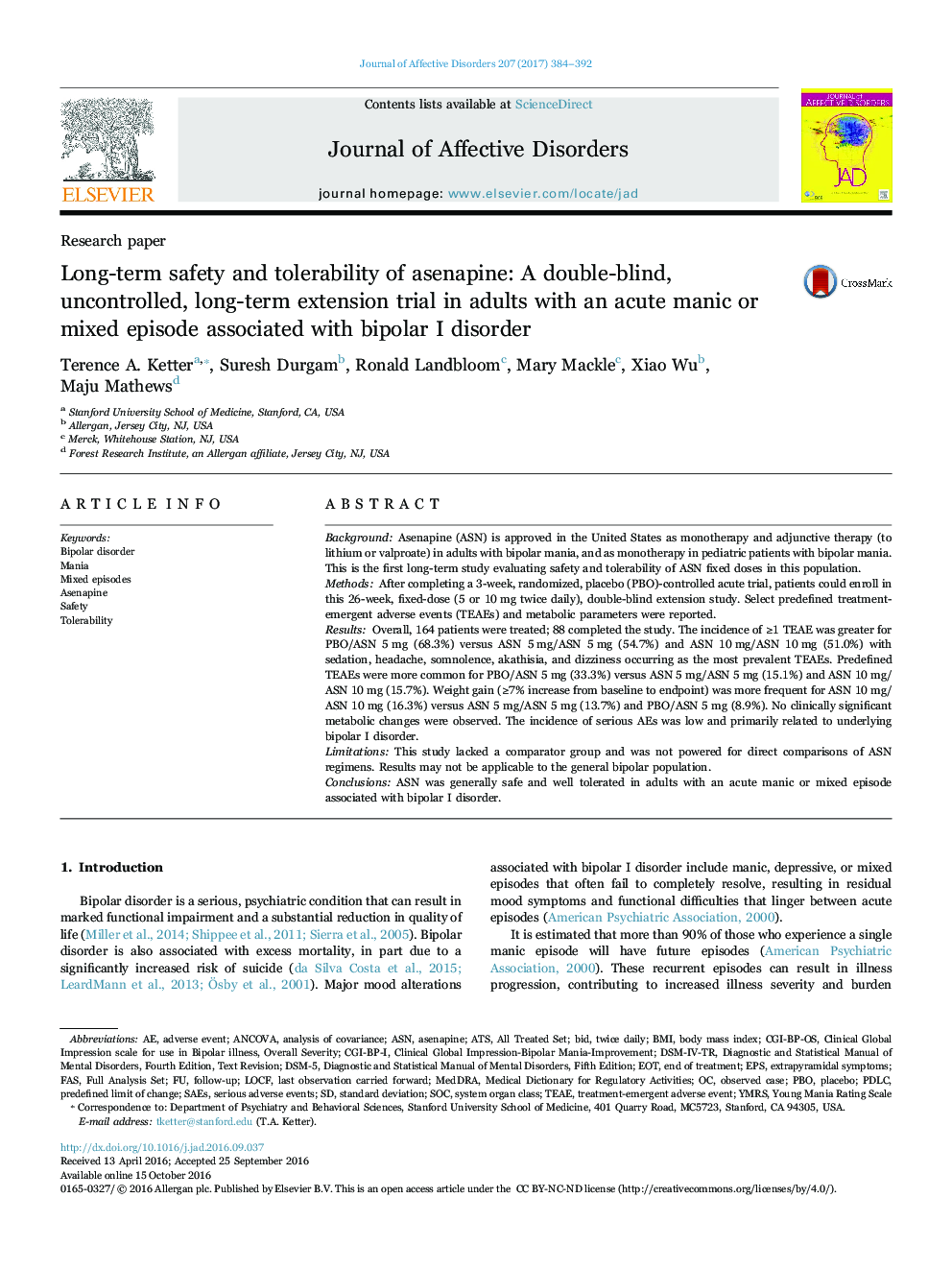| Article ID | Journal | Published Year | Pages | File Type |
|---|---|---|---|---|
| 6229556 | Journal of Affective Disorders | 2017 | 9 Pages |
â¢Asenapine 5 and 10 mg bid was generally safe and well tolerated up to 29 weeks.â¢The metabolic effects of ASN appear consistent with previous studies.â¢No dose dependence for predefined treatment-emergent adverse events.â¢Serious adverse events primarily due to underlying bipolar I disorder.
BackgroundAsenapine (ASN) is approved in the United States as monotherapy and adjunctive therapy (to lithium or valproate) in adults with bipolar mania, and as monotherapy in pediatric patients with bipolar mania. This is the first long-term study evaluating safety and tolerability of ASN fixed doses in this population.MethodsAfter completing a 3-week, randomized, placebo (PBO)-controlled acute trial, patients could enroll in this 26-week, fixed-dose (5 or 10 mg twice daily), double-blind extension study. Select predefined treatment-emergent adverse events (TEAEs) and metabolic parameters were reported.ResultsOverall, 164 patients were treated; 88 completed the study. The incidence of â¥1 TEAE was greater for PBO/ASN 5 mg (68.3%) versus ASN 5 mg/ASN 5 mg (54.7%) and ASN 10 mg/ASN 10 mg (51.0%) with sedation, headache, somnolence, akathisia, and dizziness occurring as the most prevalent TEAEs. Predefined TEAEs were more common for PBO/ASN 5 mg (33.3%) versus ASN 5 mg/ASN 5 mg (15.1%) and ASN 10 mg/ASN 10 mg (15.7%). Weight gain (â¥7% increase from baseline to endpoint) was more frequent for ASN 10 mg/ASN 10 mg (16.3%) versus ASN 5 mg/ASN 5 mg (13.7%) and PBO/ASN 5 mg (8.9%). No clinically significant metabolic changes were observed. The incidence of serious AEs was low and primarily related to underlying bipolar I disorder.LimitationsThis study lacked a comparator group and was not powered for direct comparisons of ASN regimens. Results may not be applicable to the general bipolar population.ConclusionsASN was generally safe and well tolerated in adults with an acute manic or mixed episode associated with bipolar I disorder.
